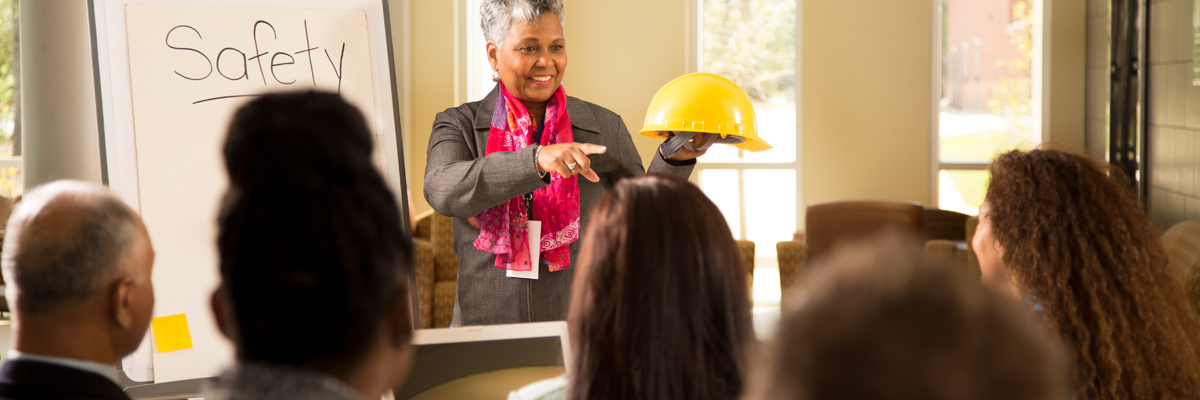The Covid-19 pandemic has reinforced the importance of ensuring that the health and safety and welfare of teachers are prominent in the minds of employers. Whilst many employers carry out their duties diligently, for others health and safety is little more than a hindrance.
It is therefore important that enquiries are made with all employers to ensure that they have sufficient oversight, procedures and processes in place.
The importance of employers having appropriate oversight cannot be overstated. The HSE has recently brought a case against Luton Borough Council for being liable for health and safety failings at a school, which included insufficient oversight.
The NASUWT recognises that not all local negotiators have a background in health and safety, and this guidance is intended to provide a suggested list of topics that could be raised with employers across the UK. Not all of these suggestions will apply to all employers, and equally they should not be considered an exhaustive list.
Ideally, these should be raised through a dedicated Health and Safety Committee. However, if one has not yet been formed, they can be raised through the normal bargaining machinery, or indeed through direct contact with the employer.
The following are the items that can be raised with employers:
-
accident and illness statistics, looking in particular for any trends or hotspots, or indeed any unusually low numbers which could indicate either good practice that requires sharing, or issues around reporting. Special consideration should be paid to work-related stress;
-
summary statistics around acts of violence and any specific serious incidents, including where individual risk assessments have been required (suitably anonymised);
-
any deaths, serious injuries, diseases or dangerous occurrences that would be reported to the HSEH/SENI under the Reporting of Injuries, Diseases and Dangerous Occurrences Regulations (RIDDOR) 2013 regulations;
-
reviews of health and safety audits and inspections of workplaces;
-
reports from any HSE/HSENI or local authority inspections of workplaces;
-
the status of the employer’s health and safety policy and generic risk assessments and/or procedures. A list of possible generic risk assessments can be found below;
-
summaries of absence management procedures and Occupational Health referrals;
-
initiatives to improve mental health, such as mental health first aid, workload audits, and management standards audits. Further information is available on the Wellbeing at Work Audits page;
-
confirmation that workload impact assessments are undertaken routinely when new work initiatives and/or procedures are introduced. An example assessment can be found on the NASUWT website (pdf);
-
that attendance at a meeting by the employer’s Health and Safety Advisor is arranged, as appropriate, to provide a report and answer questions. This is relevant for academy trusts in England in particular, as well as independent schools across the UK;
The following are possible items that could require a generic risk assessment and/or procedures to be produced by the employer.
As with all risk assessments, the generic assessments would need to be tailored for each individual workplace.
Not all will apply to every employer, nor should this be considered an exhaustive list.
List of possible contents in the health and safety policy:
-
accident or incident reporting, recording and investigation;
-
abrasive wheels;
-
access equipment;
-
aggression and violence;
-
asbestos;
-
building services;
-
compressed air or pressure systems;
-
Control of Substances Hazardous to Health (COSHH);
-
confined spaces;
-
control of contractors;
-
disabled workers;
-
Display Screen Equipment (DSE);
-
dogs;
-
driving for work;
-
educational visits/trips;
-
electrical safety, including portable electrical equipment;
-
events;
-
fire safety;
-
first aid;
-
flammable liquids;
-
hand tools;
-
hoists;
-
hot works;
-
infection control;
-
ladders and steps;
-
Legionnaires’ disease;
-
Local Exhaust Ventilation (LEV);
-
Lifting Operations and Lifting Equipment Regulations (LOLER);
-
lone working;
-
manual handling;
-
new and expectant mothers;
-
noise;
-
pest control;
-
premises security/lockdown;
-
playgrounds, play/gym and climbing equipment;
-
personal protective equipment (PPE);
-
racking storage and mezzanine floors;
-
safety harness and lanyards;
-
safe systems of work;
-
sharps;
-
slips, trips and falls;
-
stress at work;
-
safety in food preparation areas;
-
vibrating tools and equipment;
-
violence and bullying at work;
-
waste (hazardous and non-hazardous);
-
welding and flame cutting;
-
working at height;
-
workplace transport (management and pedestrian control);
-
young workers;
-
zoonoses.
Anonymous feedback
If you require a response from us, please DO NOT use this form. Please use our Contact Us page instead.
In our continued efforts to improve the website, we evaluate all the feedback you leave here because your insight is invaluable to us, but all your comments are processed anonymously and we are unable to respond to them directly.

